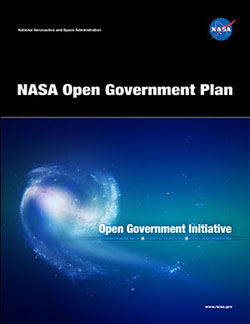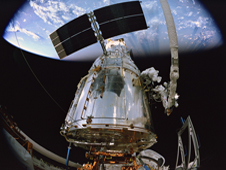Last Wednesday, NASA, along with 23 other federal agencies, released its Open Government Plan to comply with President Obama’s Open Government Directive. I was fortunate enough to have the opportunity to work closely on the development and production of the Plan, and it’s great to see it finally out in the wild!
I started working on the Open Government Directive in early February, not long after I came here. The plan was just in the beginning stages, which provided me with tons of opportunities to work directly with those who were mapping out the strategy for how to approach the Directive as well as with members of the individual project teams which were to be highlighted in the final document. I’ve never worked on a project this large or complicated before, so it was incredible to see how much effort went in to ensuring the Plan was correct down to every last word.

The Cover of NASA’s Open Government Plan
As the pace quickened in the weeks leading up to the April 7th deadline, I had the chance to take the reins on some parts of the project as we assembled the final document. It’s not very often that an undergraduate has the opportunity to write sections of a document set to be delivered to the White House, so it was great to be able to get that sort of experience! I primarily worked on the Citizen Engagement Analysis section as well as assisting on the Letter to Transparency Advocates.
The Plan also has some awesome initiatives highlighted. My personal favorites are the Open Source Software Development and Participatory Exploration Office sections. Both have the potential to get members of the public involved in NASA activities in new, innovative ways – a great opportunity for NASA to explore avenues of development and for the public to become engaged with NASA on a novel level.
You can view NASA’s entire Open Government Plan here. The plan, however, isn’t just for consumption. Be sure to give your feedback on the plan via NASA’s IdeaScale tool as well!


